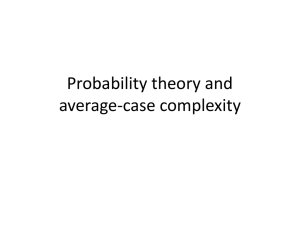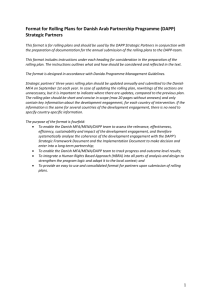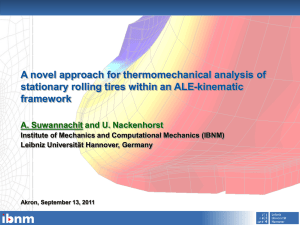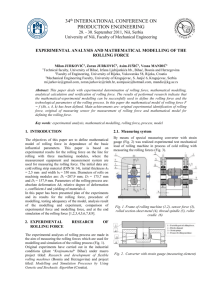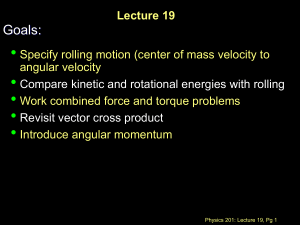Rolling Stock
advertisement
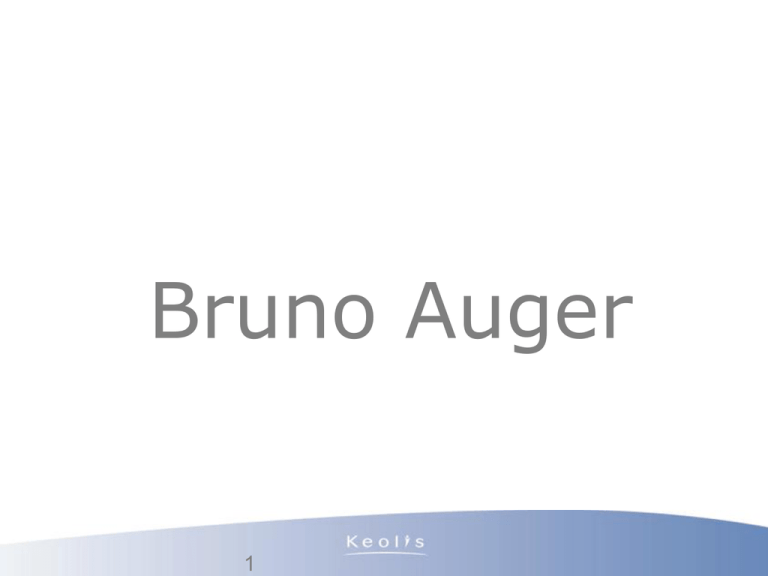
Bruno Auger 1 Rail Market : The Rolling Stock Dilemma Bruno Auger Rail Director Keolis Rolling Stock : a segmented market in Europe due to a lack of standards Different voltages Different signalling systems Different gauges… Consequences : Not a large unified market, but several small markets Negative impact on costs Second-hand market for rolling stock is only local 3 Different Timescales The duration of franchise contracts is maximum 15 years Open access contracts include a guarantee for one year (or 5 years for framework contracts) Rolling Stock lifetime is 30 years The difference involves the risk of residual value: the trains owner is at risk on a significant part of the trains initial value, and has to provision this risk in a way or another ? 4 What influences the trains value, at the end of an operating contract Norms Quality of the trains Market Evolution Cost of refurbishment Value at the end of the contract Second Hand market Conditions by PTA Fair rules of competition are necessary to develop open competition and reduce costs 5 Possible financing Parties The operator The PTA A third Party i.e. a ROSCO (Rolling Stock Company: owns the rolling stock and lease it to the operator) All Parties were impacted by the financial crisis New IFRS norms will have an impact on consolidation in the operators balance sheet (operating lease) 6 Case study 1 : The British system - The DfT (Department For Transport): Regulates the market and issues some guarantees (ex: section 54) - The ROSCOs (Rolling Stock Companies) :They own the rolling stock and lease it to the operators - The operators: Private companies which operate franchises and in some cases maintain the rolling stock (no longer national operator) - The trains manufacturers: build and in some cases maintain the rolling stock 7 Case study 1 (cont’d) : The British system The aim of railway privatization was to separate the competition in operations, from competition in investment Transfer of the assets from British Rail, the former national operator, to the ROSCOs Cascades (transfer of second hand rolling stock fleets from a franchise to another one) organized through the ROSCOs NB: A new system is being developed : PPP (Public Private Partnership); this scheme includes the procurement of rolling stock and its maintenance 8 Case Study 2 : a tender in the Netherlands After a competitive tender on a regional network, the PTA chose the bidder having proposed to replace the 10-year old DMUs by new DMUs. In the tender requirements, no new rolling stock was required, but the PTA stated that “Newer rolling stock can indeed in a technical sense in marketing make a contribution to keeping present passengers and/or generating passenger growth”. Almost 3 years after this decision, it seems the ROSCO has not found a new customer for this used rolling stock This risk has an impact on the leasing cost of such rolling stock, which increases the public transport cost 9 Assessment The risk of residual value has indeed increased during the last years : The European rolling stock market still does not exist! Some more question marks on residual value link to decision by PTA Cascades less efficient compare to national system 10 Proposals to tackle the risk of residual value: Reinforcement of the European market : convergence of standards (TSIs, ERTMS,…) to be achieved to create a second hand market As an example, Spain decided to build High Speed Lines with the European track width Progressive implementation of European standards for the railway sub-systems (TSIs: Technical Specifications of Interoperability) Multiple-voltage capacity of rolling stock could be requested (Unified voltage on networks seems too expensive) Remark : some projects, like ERTMS, only creates value if applied on a large scale 11 Within national markets : better matching of the asset lifetime with the operating contract duration A regulation for investment on the market : each new Rolling Stocks has got to be approve by national regulator The PTA is better place to manage risk concerning the duration of the asset. There is a need, at the moment, for some clarity concerning the duration of the asset use by the PTA PTA is better place to take life duration risk : BUT The PTA needs to be able to change the rolling stock in case of poor performance The PTA needs to have tools to put pressure on the operator(s) during the whole lifetime (30 years) A cascade mechanism (inter-regional pool) would be helpful 12 Thank you for your attention Date 13
